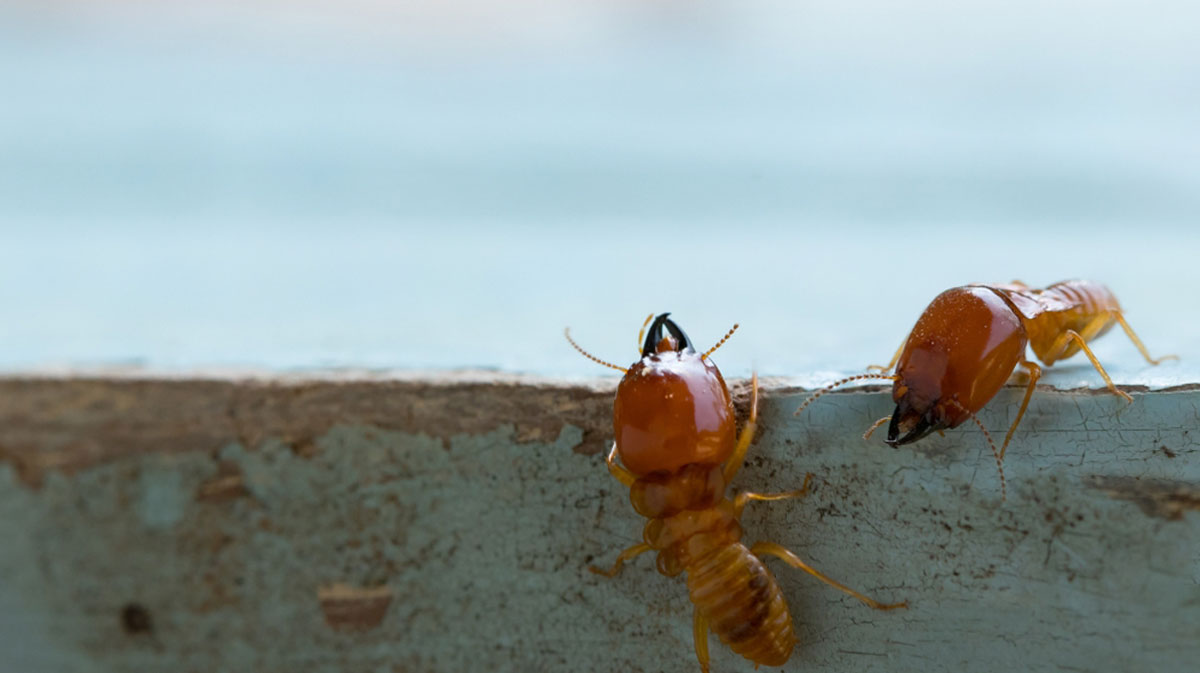
Our home is our safe space; we keep it clean every day and keep most of our favourite and important possessions there. Wherever we go, we come back to our homes to get the sleep and rest we deserve. But what if your beloved home suddenly stops being safe and clean? Termites are a notorious group of insects, and even without us realizing it, they can invade our homes and destroy our peace, along with the best of wooden furniture and parts of our homes. Though small, the destruction these insects can cause is huge, and if you fail to control and destroy them in time, they can even cause structural damage to your home. But before a termite infestation causes such a drastic effect and leads to costly repairs, what if you can control it and prevent further damage? This article is a complete guide to preventing and controlling termite infestations in your home.
Termites are groups of cellulose-eating insects with over 2700 species around the world. Silent and tiny, these insects live in colonies similar to ants, and despite their size, they are mighty and vicious when it comes to feeding on wood and other plant-based materials at homes. Also called white ants, termites do not directly affect humans in any way, and they are an integral part of the ecosystem, breaking down plant materials in the soil and keeping the cycle of nature intact. But when they invade our homes, they destroy many things dear to us, and sometimes they even damage the very structure of buildings. So how do you keep them out of your home?
To keep them away, first, you have to know if they are present, right?! Like we mentioned above, termites are tiny, and they might be harder to spot in the early stages of infestation. But identifying them during the early stages is crucial to avoiding major damage, and the earlier they are out of the house, the better, right? So here are some signs to look for if you have a hunch that there is a termite infestation in your house.
Wood damage: Obviously, the first sign of a termite infestation is hollowed-out or damaged wood. Check your wooden furniture and other parts of your home made of wood and look for these signs.
Mud tunnels: Another major sign of a termite infestation is finding mud tunnels. These tunnels are made by termites to travel from their food sources to their nests, and finding them near your home can be a sure sign of a termite infestation.
Shedded wings and termite droppings: Termites in the reproductive stage shed their wings before relocating and starting a new colony, so if you find shedded wings in your home near cracks or openings, it could be a sign. Termite droppings are another major sign of a termite infestation. They look like small wooden pellets; look for them near your wooden furniture and door.
Now that you know where and how to look for signs of termite infestation, you will need to know the prevention and control measures. Here are some prevention measures to avoid termites:
● Keep your home dry: An environment with moisture is attractive to termites, so keep your home dry and make sure you have proper ventilation.
● Wood: The furniture and other parts of your home made of wood are the main sources of food for termites, so to avoid them, keep them out of
contact with the floor and use an anti-termite coating on everything wooden you have in your home.
● Seal open cracks: We will find tiny openings and cracks we haven't noticed before in our homes if we properly look for them.
Termites use these cracks to enter your home, so find them before they do and seal them.
Above, we discussed some prevention measures against termite infestations, but if you are already facing a termite infestation, you need additional steps to control and keep them away. For example, you can use pressure-treated wood, steel framing for wooden parts of your home, or a termite-resistant alternative for wood. Another effective way to treat termites is to use termiticides around your home, killing the termites that are in contact.
Termite baiting is an exceptionally effective do-it-yourself termite control measure you can use. Like the name suggests, termite bait attracts termites, and when termites who come in contact with the bait go back to their colony, they carry the slow-acting toxins, which will destroy the entire colony of nests. However, these measures can still be lackluster when it comes to a serious termite infestation, and the help of a professional is always the best. So if you find yourself in a similar situation, don't hesitate to call a professional pest control service to help you.